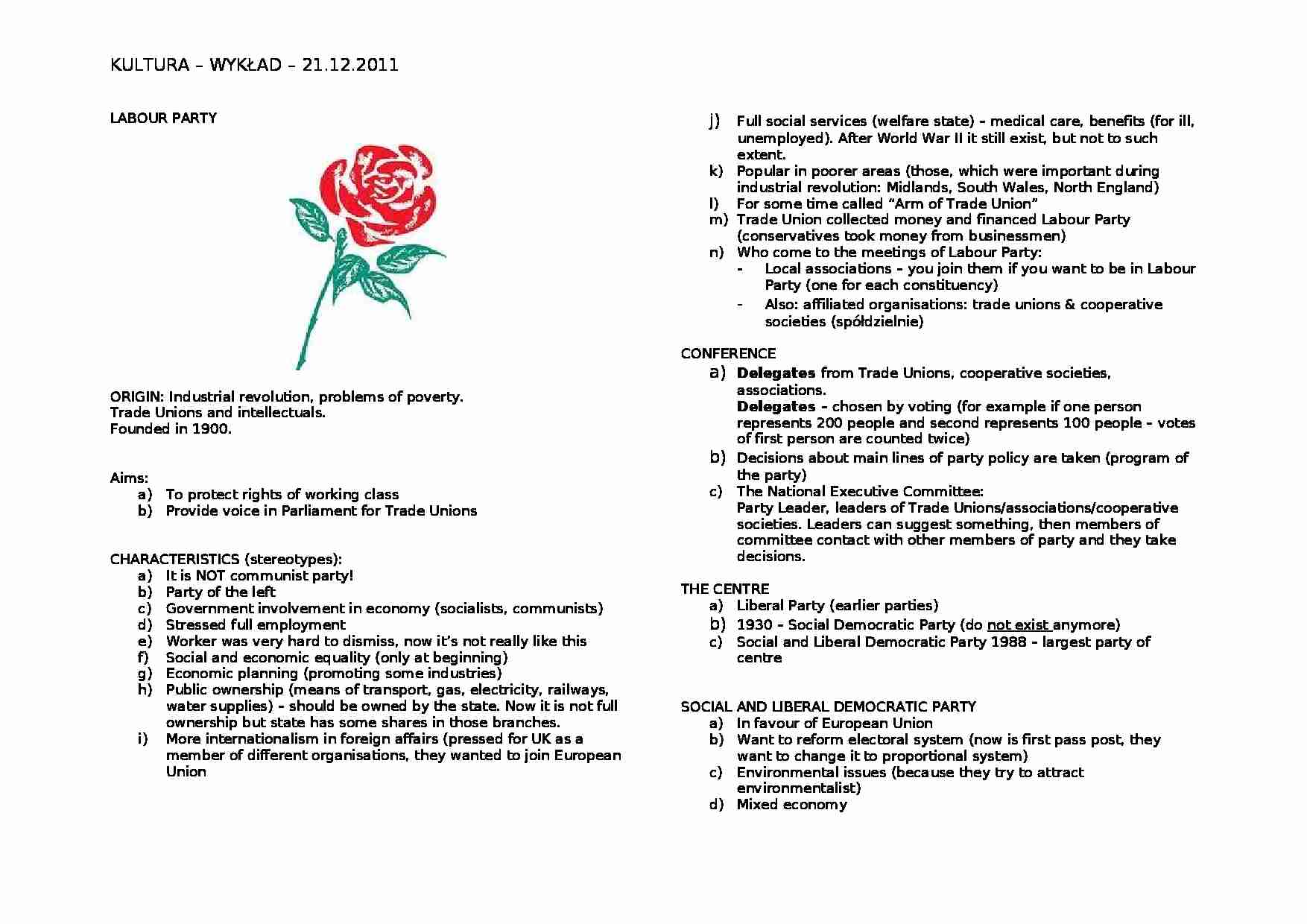To tylko jedna z 2 stron tej notatki. Zaloguj się aby zobaczyć ten dokument.
Zobacz
całą notatkę


LABOUR PARTY
ORIGIN: Industrial revolution, problems of poverty.
Trade Unions and intellectuals. Founded in 1900.
Aims:
To protect rights of working class
Provide voice in Parliament for Trade Unions CHARACTERISTICS (stereotypes):
It is NOT communist party!
Party of the left
Government involvement in economy (socialists, communists)
Stressed full employment
Worker was very hard to dismiss, now it's not really like this
Social and economic equality (only at beginning)
Economic planning (promoting some industries)
Public ownership (means of transport, gas, electricity, railways, water supplies) - should be owned by the state. Now it is not full ownership but state has some shares in those branches.
More internationalism in foreign affairs (pressed for UK as a member of different organisations, they wanted to join European Union
Full social services (welfare state) - medical care, benefits (for ill, unemployed). After World War II it still exist, but not to such extent.
Popular in poorer areas (those, which were important during industrial revolution: Midlands, South Wales, North England)
For some time called “Arm of Trade Union”
Trade Union collected money and financed Labour Party (conservatives took money from businessmen)
Who come to the meetings of Labour Party:
Local associations - you join them if you want to be in Labour Party (one for each constituency)
Also: affiliated organisations: trade unions & cooperative societies (spółdzielnie)
CONFERENCE Delegates from Trade Unions, cooperative societies, associations.
Delegates - chosen by voting (for example if one person represents 200 people and second represents 100 people - votes of first person are counted twice)
Decisions about main lines of party policy are taken (program of the party)
The National Executive Committee:
Party Leader, leaders of Trade Unions/associations/cooperative societies. Leaders can suggest something, then members of committee contact with other members of party and they take decisions.
THE CENTRE
Liberal Party (earlier parties)
1930 - Social Democratic Party (do not exist anymore)
Social and Liberal Democratic Party 1988 - largest party of centre SOCIAL AND LIBERAL DEMOCRATIC PARTY
In favour of European Union
Want to reform electoral system (now is first pass post, they want to change it to proportional system)
... zobacz całą notatkę




Komentarze użytkowników (0)